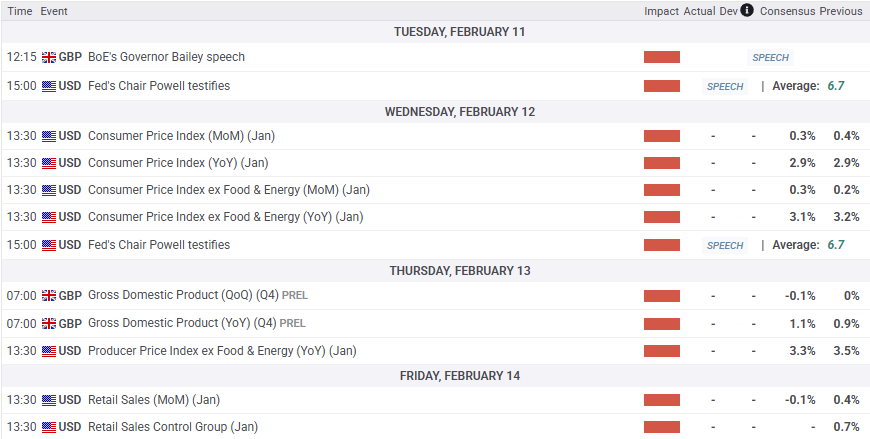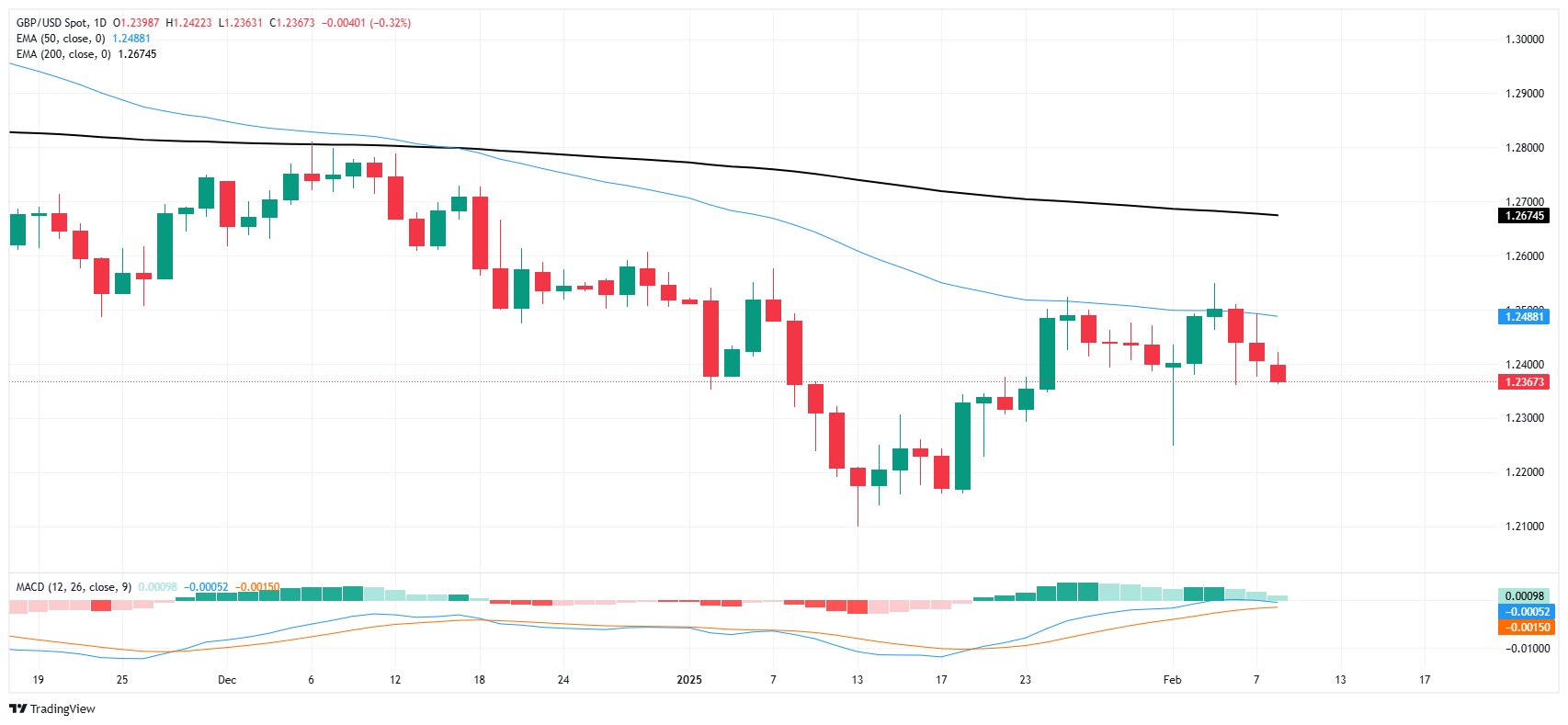GBP/USD sheds weight for a third straight day, central bank heads up next
- GBP/USD fell another third of a percent of Monday.
- Market sentiment is due for another knockback as fresh tariff threats surface.
- BoE Bailey, Fed Powell, US CPI inflation, and UK GDP all on the docket.
GBP/USD sunk for a third straight trading day on Monday, kicking off the new trading week on the backfoot and slipping back below the 1.2400 handle, shedding one-third of one percent in the process. US President Donald Trump renewed his vigor to kick off a US vs everybody else trade war late Monday, slapping a 25% tariff on all imported steel and aluminum into the US.
Read more: US President Donald Trump signs off on 25% tariffs on steel and aluminum
Bank of England (BoE) Governor Andrew Bailey is due to give a keynote speech on Tuesday. Cable traders will be keeping an eye on the BoE head following the UK central bank’s rate cut last week, looking to nail down any hints of forward guidance on where the BoE could be heading next. Federal Reserve (Fed) Chair Jerome Powell follows up with an appearance of his own, testifying before the US Senate Banking Committee on Tuesday.
The key datapoints this week will be US Consumer Price Index (CPI) inflation slated for Wednesday, as well as UK Gross Domestic Product (GDP) and US Producer Price Index (PPI), both due on Thursday.

GBP/USD price forecast
GBP/USD has chalked in a second straight rejection from the 50-day Exponential Moving Average (EMA) near 1.2500, setting the stage for a continued decline. Price action is tilting back toward the 1.2300 handle, and near-term momentum has shifted firmly bearish. Cable has printed three straight down days after failing to recapture the 1.2500 level, and the bullish recovery from January’s lows near 1.2100 has officially run out of steam.
GBP/USD daily chart
Pound Sterling FAQs
The Pound Sterling (GBP) is the oldest currency in the world (886 AD) and the official currency of the United Kingdom. It is the fourth most traded unit for foreign exchange (FX) in the world, accounting for 12% of all transactions, averaging $630 billion a day, according to 2022 data. Its key trading pairs are GBP/USD, also known as ‘Cable’, which accounts for 11% of FX, GBP/JPY, or the ‘Dragon’ as it is known by traders (3%), and EUR/GBP (2%). The Pound Sterling is issued by the Bank of England (BoE).
The single most important factor influencing the value of the Pound Sterling is monetary policy decided by the Bank of England. The BoE bases its decisions on whether it has achieved its primary goal of “price stability” – a steady inflation rate of around 2%. Its primary tool for achieving this is the adjustment of interest rates. When inflation is too high, the BoE will try to rein it in by raising interest rates, making it more expensive for people and businesses to access credit. This is generally positive for GBP, as higher interest rates make the UK a more attractive place for global investors to park their money. When inflation falls too low it is a sign economic growth is slowing. In this scenario, the BoE will consider lowering interest rates to cheapen credit so businesses will borrow more to invest in growth-generating projects.
Data releases gauge the health of the economy and can impact the value of the Pound Sterling. Indicators such as GDP, Manufacturing and Services PMIs, and employment can all influence the direction of the GBP. A strong economy is good for Sterling. Not only does it attract more foreign investment but it may encourage the BoE to put up interest rates, which will directly strengthen GBP. Otherwise, if economic data is weak, the Pound Sterling is likely to fall.
Another significant data release for the Pound Sterling is the Trade Balance. This indicator measures the difference between what a country earns from its exports and what it spends on imports over a given period. If a country produces highly sought-after exports, its currency will benefit purely from the extra demand created from foreign buyers seeking to purchase these goods. Therefore, a positive net Trade Balance strengthens a currency and vice versa for a negative balance.

